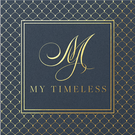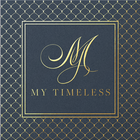Vintage Mid-Century 1950s
The economic boom which followed the war, the desire to rebuild and restore what had been destroyed, the determination to reconstruct a new wealth out of the rubble, characterised the early 1950s. Both industry and the economy flourished, and consumerism, after the years of privation, made its appearance, with television opening the way to immediate communication of images from all over the world. Travelling and holidaying abroad became popular after years of border restrictions, and owning a car became a reality for many.
Jewellery design could not escape this change towards curved, informal and free lines, which were particularly suited to the fashion of the time.
The solid and massive metallic surfaces of the 1940s were substituted for twisted wires, lattice patterns, fretted lace motifs and woven gold mesh . Closely claw-set gemstones were often preferred to the large geometric surfaces paveset with gems of the previous decades.

DIAMOND BROOCH, ca. 1950. Enchanting, finely open-worked flower brooch with an "en-tremblent" mounted centre
Another characteristic of the 1950s was a return to a differentiation between jewels for day wear and ornaments for evening wear; the former in the shape of gold necklaces and bracelets of simple design, occasionally and discreetly set with precious or semiprecious stones, the latter in the form of rich and opulent parures of diamonds and coloured precious stones.

Necklace; Cartier, 1950 | Ruby jewelry, Jewelry, Diamond
Day jewellery was a triumph of gold in the form of tubular chains, corded wire, fringes, pleated motifs, and woven patterns evening jewellery preferred platinum, white gold and palladium for the setting of cascades and fostoons of brillant-cut,pear-shaped, marquise and baguette diamonds

1950 Vintage 18kt Yellow Gold Wide Woven Link Tassel Bracelet with Turquoise.

Sapphire Bracelet Watch, Marschak 1950

